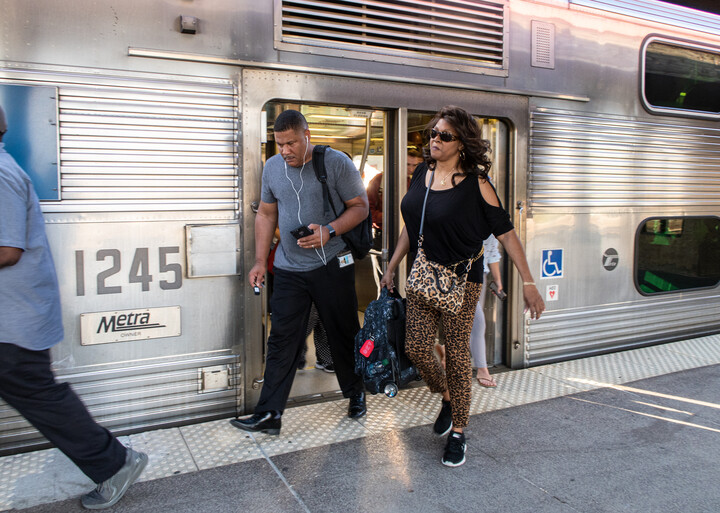Did You Know?
New analysis highlights racial disparities in Chicago area transit access

A new tool illustrates how longstanding patterns of segregation and discrimination in public policy have caused transit access for Black and Brown residents to lag behind access for White residents.
The Transit Equity Dashboard, produced by the national foundation TransitCenter, maps and quantifies the disparities in transit access caused by segregation and discrimination in land use and transportation policy. TransitCenter helps fund and support local transit advocacy organizations like Active Trans and the Center for Neighborhood Technology (CNT).
The COVID crisis made racial inequities in public health and economic status very plain. Good transit helps address these disparities by opening up access to jobs, education, medical care, and other necessities.
But disparities in transit access linked to race and economic status undermine transit’s function as a “ladder of opportunity.”
As the process of reopening accelerates in greater Chicago, Active Trans, CNT, and advocates from across the region call on political leaders to prioritize public investments that will shrink gaps in transit access and put the region on the path to a just recovery.
The city’s recently-launched Chicago Works 5-year capital plan provides an opportunity to pursue the transformative investments needed to increase transit access for the highest-need residents. Unfortunately, that plan currently lacks the focus and transparency needed to achieve its equity and sustainability goals.
In addition to job access, the dashboard measures transit access to hospitals, grocery stores, parks, and colleges, reflecting the fact that most trips are not commute trips, and that equitable transit enables people to access more than the workplace. Key findings include:
- On a weekend morning, it takes three times longer to reach the closest hospital using transit than using a car. Poor access to healthcare is associated with worse health outcomes; it also means long transit commutes for essential healthcare workers working second- and third-shift roles.
- There are significant racial disparities in transit access to jobs. The average Black resident can access 236,641 potential jobs in 45 minutes using transit, and the average Latinx resident can access 241,622 jobs, compared to 344,182 for the average white resident.
- Expensive fares for Metra rail service inhibit transit access for residents with lower incomes. On average, transit access to jobs falls 15 percent if someone cannot afford “premium” services and spends no more than $4 for a one-way trip.
Achieving more equitable transit in greater Chicago will require changes to both the broad sweep of transportation and land use and the specifics of transit operations and fare policy. Advocates have proposed reforms to remediate the racial and economic divides in the region’s transit access, including:
- Street design changes to speed up CTA bus service across Chicago
- Making Metra commuter rail more affordable, with more service throughout the day
- Developing areas around CTA rail stations and bus stops as centers for community activities and affordable housing
Transit agencies and local governments in the Chicago region should also adopt new performance targets that measure inequities like those identified by this dashboard, and assess progress toward equitable transit access.
Everyone in the Chicago region should be able to get where they need to go on public transit, regardless of where they live.
This analysis proves elected officials and agency leaders have much more work to do to repair our region’s legacy of racism and discrimination in transportation planning and investing.
Make a Donation
Your tax-deductible donation supports the important work that Active Trans does throughout the region
